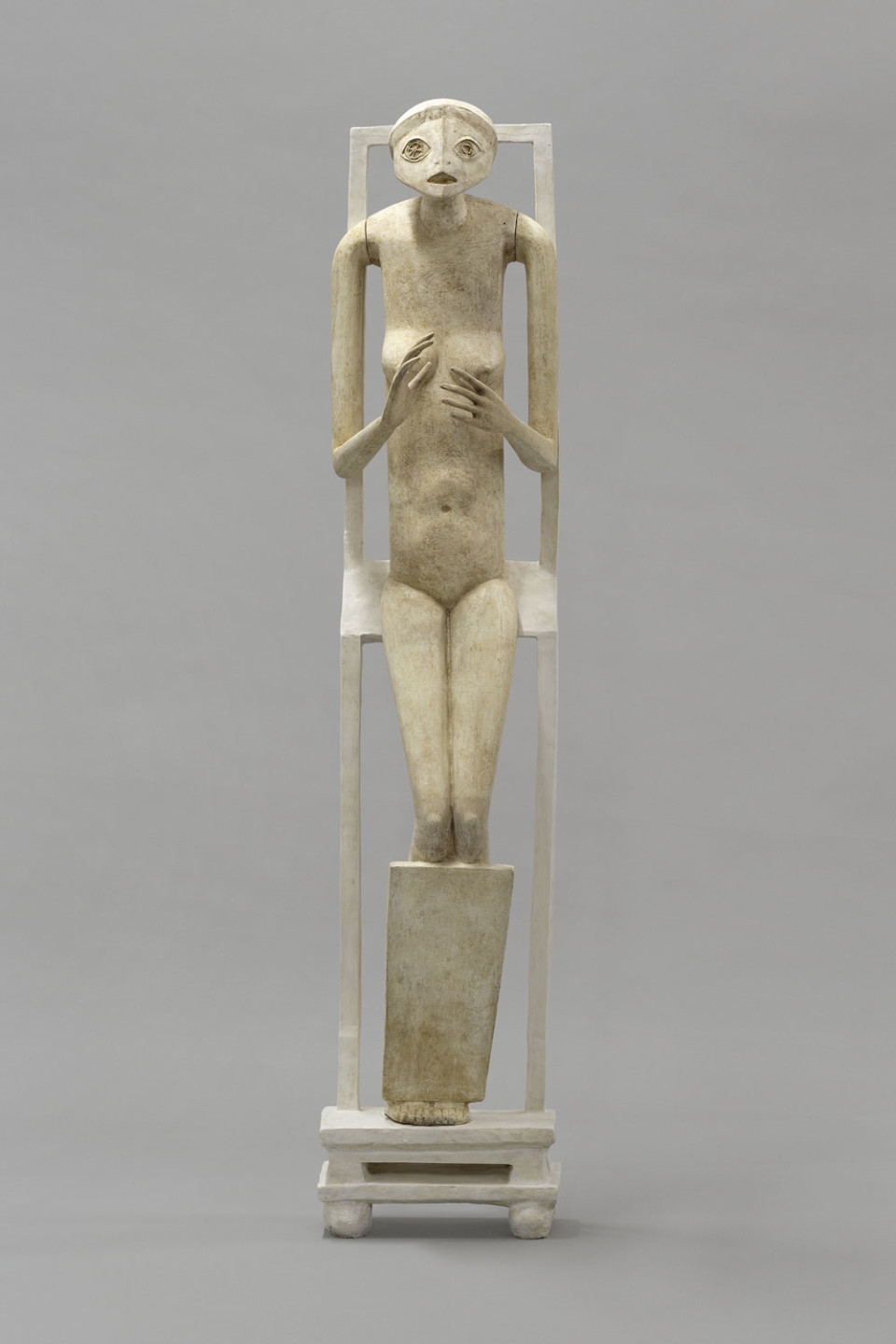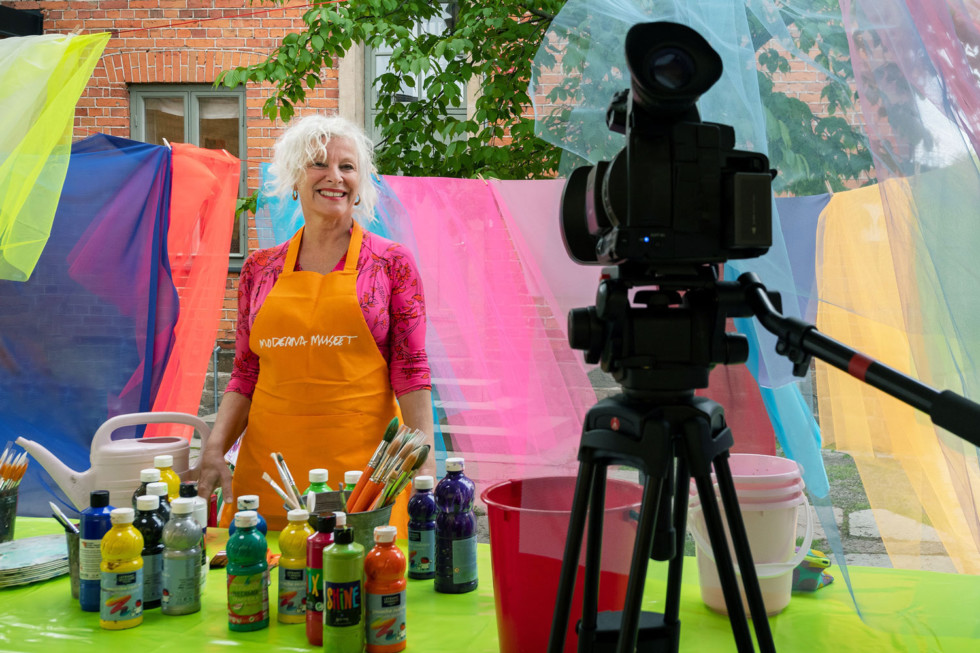
Photo: Åsa Lundén/Moderna Museet
Online workshop
Interactive live-stream
Stockholm
Paint a portrait at the easel
You need: paper, tape, liquid paint (we use tempera), brushes and water.
Join Pernilla Stalfelt, art educator at Moderna Museet, and explore easel painting outdoors. We are inspired by portraits and take a closer look at art in the Museum. During the livestream, you can chat to Pernilla and others who are watching.
Painting outdoors is great. You don’t need a studio. With an easel you can use special techniques in your painting. Paint a portrait of your parents or a friend. Or why not paint a self-portrait from memory. Maybe you can use a photo and paint a person based on what you see? And feel free to paint whatever you want. The important thing is to have fun with colours, and perhaps make several paintings.
Self-portraits
You need: Pencils, rubber, drawing paper, pastels, crayons or felt-tip pens, a mirror.
Make a self-portrait inspired by Sigrid Hjertén and Ragnar Sandberg. Their paintings are like selfies, even though they were made long ago. Both artists made bright pictures, and were very free in their use of colour.
Together, we study ourselves in the mirror and then play with colour. What shape is your chin? How big is your forehead in relation to your chin? Is your neck broader than your forehead? Before you start, think about what to wear for your self-portrait. The colour of your clothes affects the result. You can also paint your clothes in an imaginary colour. If you like yellow, give yourself yellow clothes in the portrait. Maybe you want a red scarf, or a pair of beautiful earrings, a necklace, a hat or a beanie.
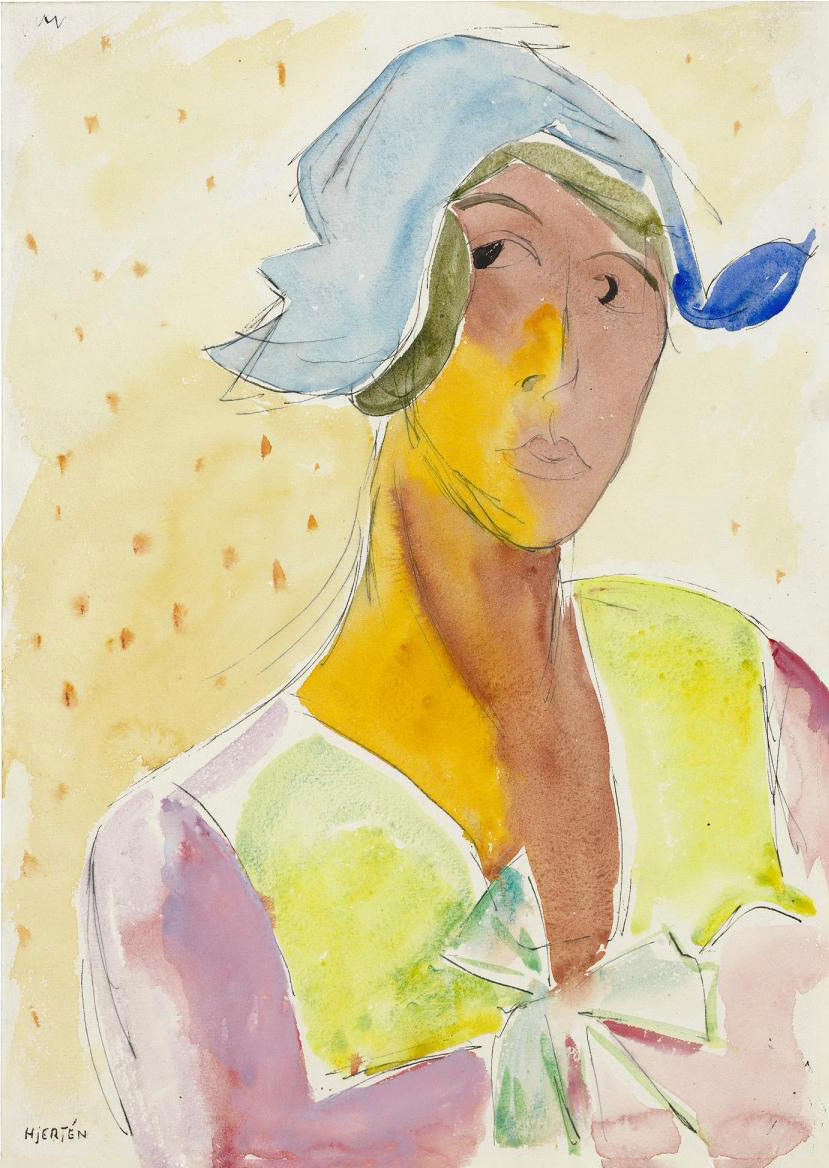
Outside your window
You need: Paint brushes, paper, watercolours, something to put your paper on and a jar of water.
We look out the window and paint the view, inspired by Sigrid Hjertén. Hjertén had a studio at Slussen in Stockholm. From her window, she could see buildings, boats, people and other things that she painted in all sorts of colours.
Now, we will look out through our windows and paint what we see. Maybe a tree, a street, or a lamppost. What colour is the sky? Are there any people? Use colours to describe how you feel!
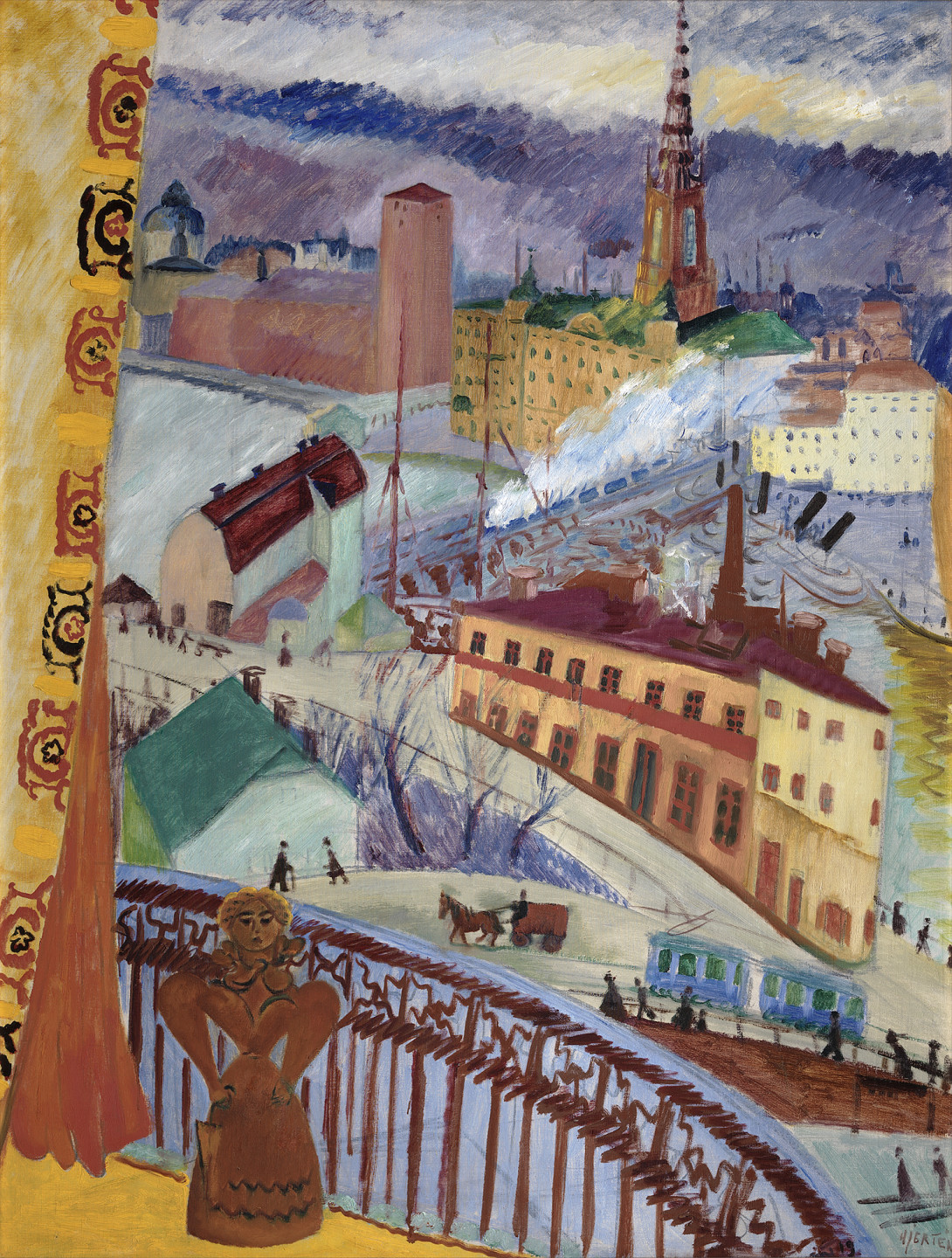
My favourite animal
You need: Paper, pencil, rubber, smartphone camera, felt-tip pens or watercolours.
Paint a picture of yourself with your favourite animal, inspired by Marc Chagall. Where Chagall grew up, the streets were full of people and animals. He painted a man with a goat. They seem to like each other, and both of them have beards.
Together, we will paint ourselves with our favourite animal. It can be a pet, a cuddly toy, or a fantasy creature. It’s hard to get animals to sit still so you can draw them – so you could ask someone to take a picture of you with your animal. Or maybe you already have a photo of you and your pet? You can also paint from your imagination. You know sort of what you and your animal look like.
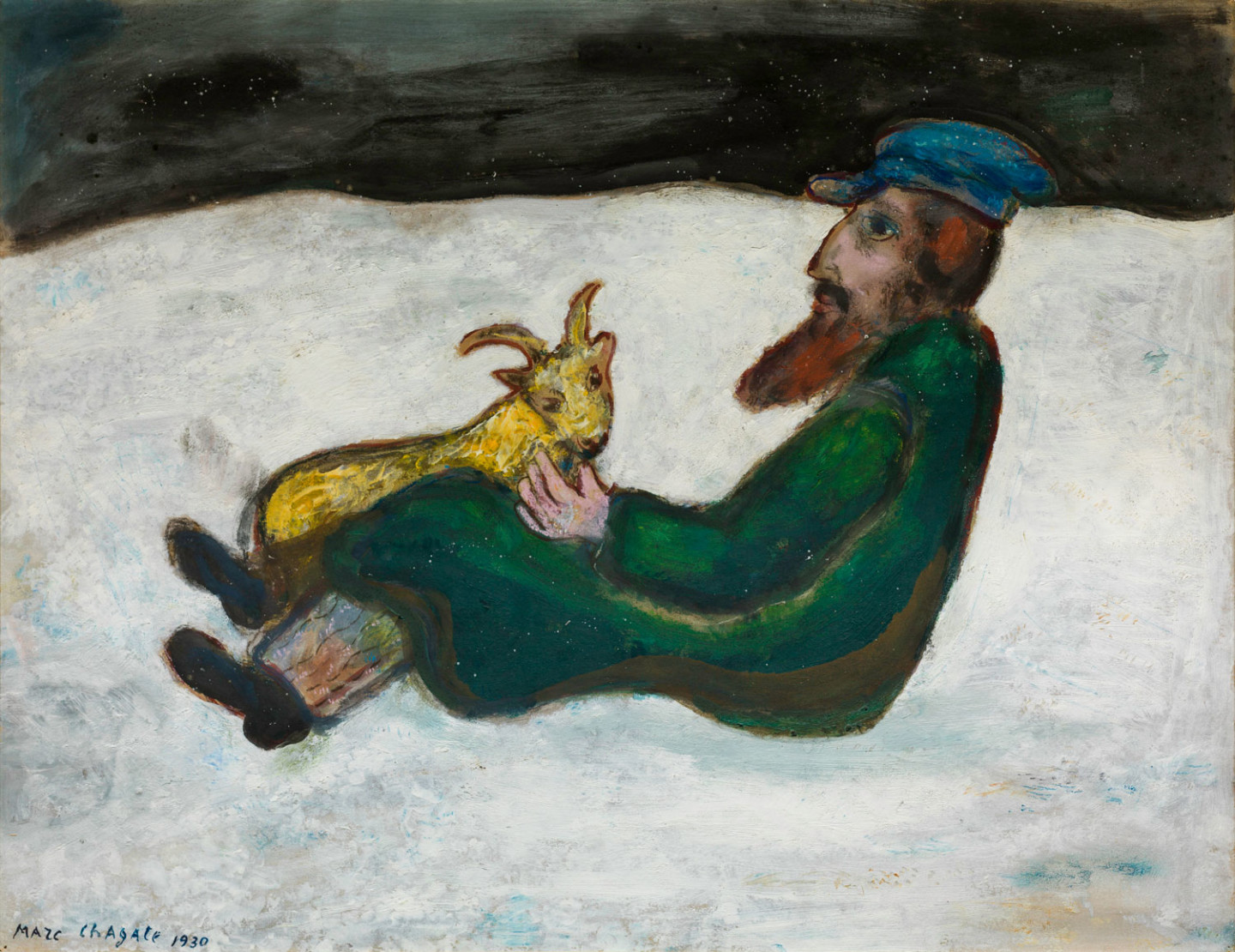
Alberto Giacometti – Clay and Wire
You need: clay, wire, a staple gun, pliers and a piece of wood or strong cardboard.
Make your own sculpture out of clay and wire, inspired by Alberto Giacometti. His sculpture “Invisible Object” is made of plaster and stands around 1.5 metres tall. The figure gazes intently into empty space. Its mouth is gaping. One eye has a wheel for a pupil, and the other is more like a flower.
But the hands are probably what Giacometti wanted us to focus on. They are finely-shaped and seem to hold something tenderly. What is the figure holding? It doesn’t seem to weigh much. It could be round. Is it another human being, an invisible child? Or perhaps a feeling. Can you hold a feeling?
